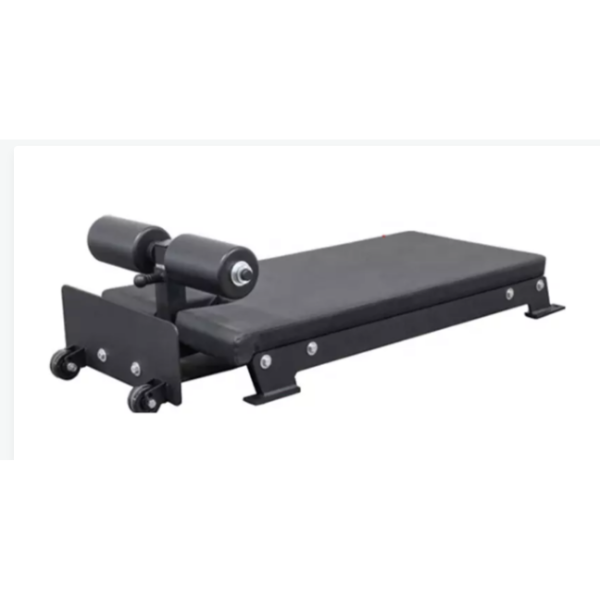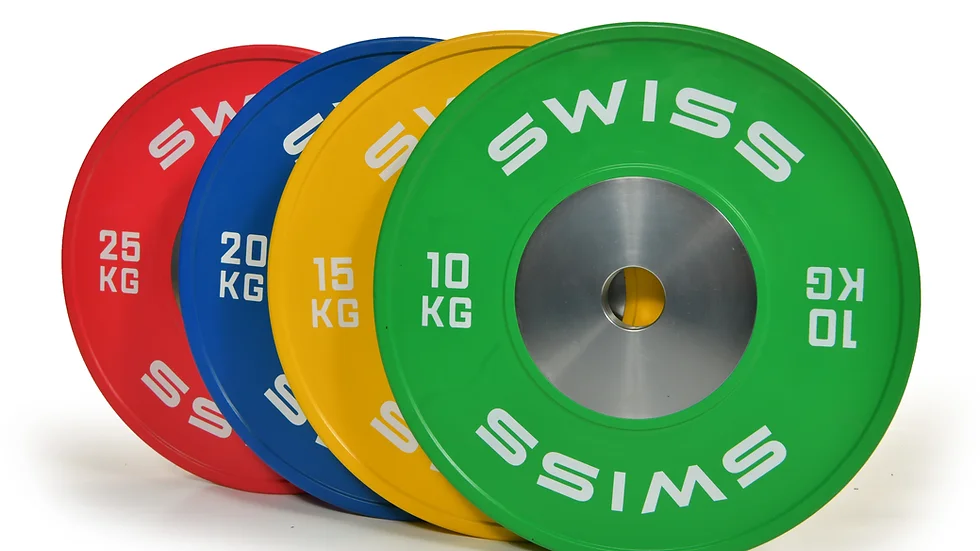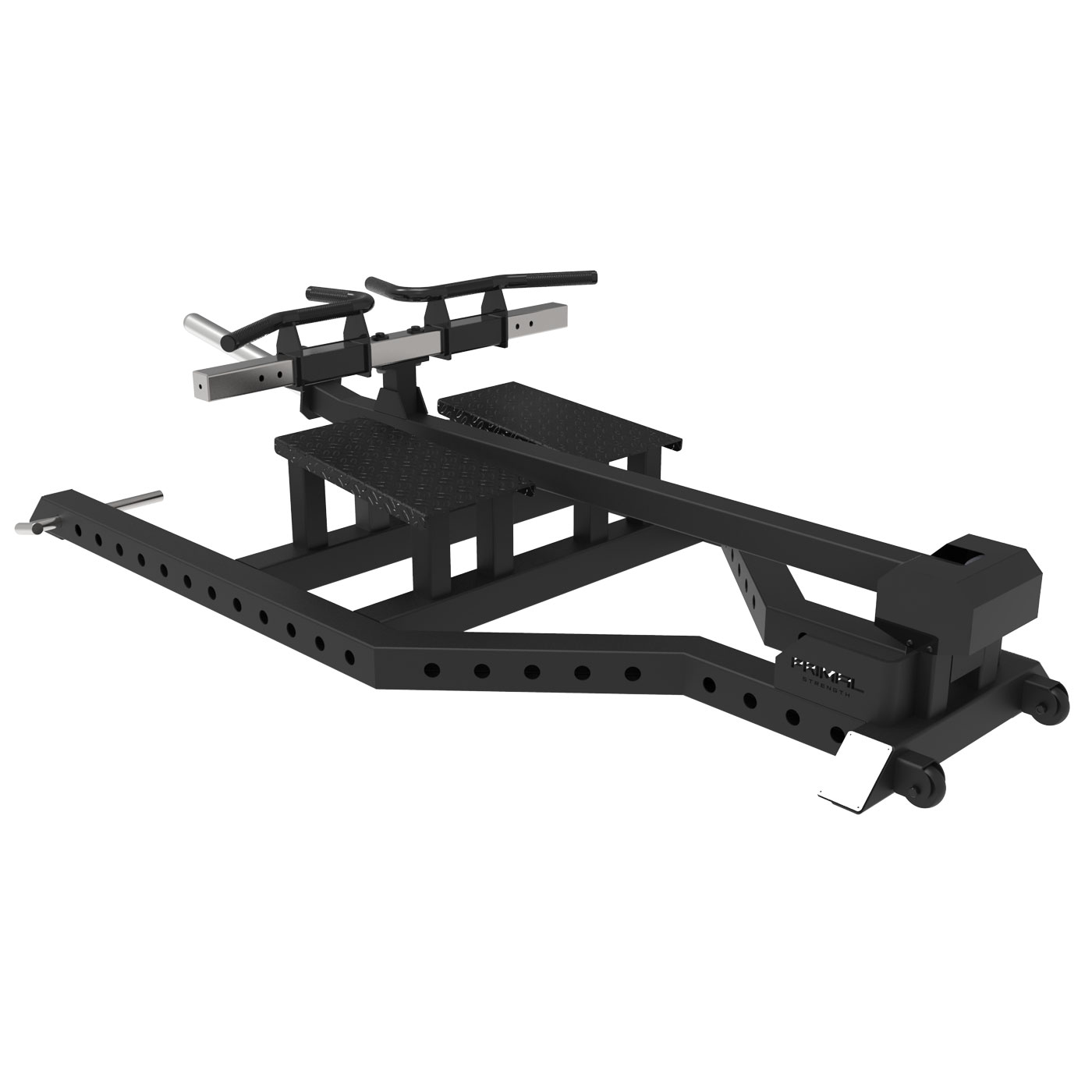At Completegyms, we are proud to offer you this Floor Glute Ham Raise from Swiss.
Why not warm up with Resistance Bands
Check out this video – Video
How to Do the Glute Ham Raise
First things first, this move is preferably done using a glute-ham machine. If you don’t have access to one, there are effective variations you can try. That said, the how-to below is written for those who can use a GHD (glute-ham developer).
Step 1 — Get Set Up
Adjust the pad of the GHD so that your feet are firmly planted against the toe plate with your quads rest on the pad. When you come back up for a rep, your knees should “fall through” the space between the pad and the toe plate.
Form Tip: If your knees are on the pad too much, you risk hyperextending the knee.
Step 2 — Extend Your Knees
Once you’re the GHD is set up and you’re positioned on it, push your toes into the plate and extend the knees. Your body will move forward. Allow it to extend until your torso is parallel to the floor.
Form Tip: Keep your lower back flat, and allow the knees to flex and straighten smoothly.
Step 3 — Pull Yourself In
To come back up, think about pulling yourself upwards by flexing the knees and falling back into the space they were initially in.
Form Tip: This exercise trains the hamstrings at both the knee and hip joint. Make sure you feel the stretch and contract in both areas (upper and lower hamstring).
Benefits of the Glute-Ham Raise
Below are three benefits of performing glute-ham raises that you can expect from adding this exercise into your workout.
Better Hamstring and Glute Development
Few movements isolate the hamstrings and hips without additional loading than the glute-ham raise. While movements like the Romanian deadlift, good morning, and stiff-legged deadlift all have their place, lifters can use the glute-ham raise to build muscular conditioning and hypertrophy in the hamstring, glutes, and lower back without touching a weight. And that’s important if you’re potentially injured or simply want to give your joints a break from the hard pounding of iron.
Improved Lower Back Health
This works two ways: First, your lower back won’t be loaded with weights, which is always nice since heavy back squats can cause an immense amount of pressure on your spine and spinal erectors. Second, the lower back sometimes comes into play when the hamstrings and glutes aren’t able to keep up. Say you’re doing a deadlift but you’re not able to contract your hammies and butt in a way that helps you lift the weights, well, your lower back is going to take over. By isolating your glutes and hamstrings, you’re strengthening them to give your lower back a break.
Enhance Posture
Everybody thinks about the shoulder blades when it comes to proper posture. Yes, squeezing your shoulders back and together is one aspect of posture, but your posterior chain — lower back, hamstrings, and glutes — supports your torso to keep you upright. These muscles also disperse mechanic stress and loading across the entire posterior chain, rather than taxing one muscle group (often the erectors).
Muscles Worked by the Glute-Ham Raise
The glute-ham raise primarily involves the hamstrings and the glutes. That said, you can also increase muscle mass and endurance throughout the entire posterior chain. Below is a listing of the most worked muscle groups during the glute-ham raise exercise.
Hamstring
Unlike other hamstring exercises that may only train the hamstring at one joint (knee flexion or hip extension), the glute-ham raise trains them both, at the same time, making it a complete hamstring movement.
Glutes
You may find your glutes engage involved when your hips extend during the second phase of the movement. This is normal as the glutes are what extend your hips.
Do the Glute-Ham Raise?
The glute-ham raise can be used by strength, power, and fitness athletes to increase pulling strength, hamstrings hypertrophy, and lower body performance in sporting lifts.
Strength and Power Athletes
- Powerlifters and Strongman Athletes: The glute-ham raise trains the hamstrings at both the origin and insertion point, making it a complete hamstrings movement that builds strength and hypertrophy. It also requires zero external loading, making it a great movement to train the hamstrings to failure without adding stress to the back or body.
- Olympic Weightlifters: Similar to strongman and powerlifting athletes, the glute-ham raise is a viable option for lifters who are looking to increase hamstring strength, hypertrophy and boost knee stability without having to use high amounts of external loading (such as with good mornings or stiff leg deadlifts).
General Population and Fitness Athletes
For all the reasons listed above, any average gym-goer can use this move (or the variations listed below). Typically, this is an accessory movement as it’s done fr higher reps without weight. CrossFitters are quite familiar with the GHD, but more so for GHD sit-ups. Though, performing high-rep glute-ham raises will only increase one’s lower-body endurance and resilience.
Glute-Ham Raise Sets, Reps, and Programming Recommendations
Here are three ways to program glute-ham raises into your next workout.
To Gain Muscle
There is many loading, sets, and rep schemes available to coaches to train the glute-ham raise for size and strength. The key here is to focus on the muscle contractions, rather than just mindlessly moving weights or allowing the lower back to take over the movement. Perform three to five sets of eight to 15 repetitions, with 90-120 second rest periods with moderate to heavy loads.
To Gain Strength
Do three to five sets of five to 10 repetitions with 90-120 second rest periods. While there are no exact guidelines as to how to strengthen the hamstrings using glute-ham raises, adding tempos, loads, and partial ranges of motion (at times) can all be used to facilitate strength development.
To Improve Muscle Endurance
Perform two to three sets of 20-30 repetitions with 45-60 second rest with light to moderate loads. Stick with your bodyweight here and focus on either adding reps or cutting down on your rest time.
Glute-Ham Raise Variations
Below are three glute-ham raise variations that you can do to improve strength, size, and overall muscle growth of the hamstring, glutes, and lower body.
Tempo Glute-Ham Raise
You can use tempo training with the glute-ham raise to increase time under tension. Try lowering yourself to a count of three seconds and holding the contraction at the top of the movement for three seconds.
Eccentric-Focused Glute-Ham Raise
This variation is similar to the tempo glute-ham raise, but you focus solely on the lowering phase. Try lowering yourself to a count of five-second and then help yourself back up to the starting position. You can add weight by holding a weight plate or dumbbell.
Isometric Glute-Ham Raise Hold
This version of the glute-ham raise has you pause at a certain point of the movement — typically when your chest is parallel to the floor.
Glute-Ham Raise Alternatives
Below are four glute-ham raise alternatives that can be done to vary programming, challenge lifters, and more.
Nordic Curl
The Nordic curl is similar to the glute-ham raise in that it challenges the hamstring at both the knee and hip joints simultaneously. The Nordic curl is a more tricky alternative and sometimes can be less effective than the glute-ham raise due to a lifter losing ability to perform this with strict form.





Reviews
There are no reviews yet.